Abstract
Cell-free extracts capable of converting [14C]-labeled gibberellins (GAs) were prepared from spinach (Spinacia oleracea L.) leaves. [14C]-labeled GAs, prepared enzymically from [14C]mevalonic acid, were incubated with these extracts, and products were identified by gas chromatography-mass spectrometry. The following pathway was found to operate in extracts from spinach leaves grown under long day (LD) conditions: GA12 → GA53 → GA44 → GA19 → GA20. The pH optima for the enzymic conversions of [14C]GA53, [14C]GA44 and [14C]GA19 were approximately 7.0, 8.0, and 6.5, respectively. These three enzyme activities required Fe2+, α-ketoglutarate and O2 for activity, and ascorbate stimulated the conversion of [14C]GA53 and [14C]GA19. Extracts from plants given LD or short days (SD) were examined, and enzymic activities were measured as a function of exposure to LD, as well as to darkness following 8 LD. The results indicate that the activities of the enzymes oxidizing GA53 and GA19 are increased in LD and decreased in SD or darkness, but that the enzyme activity oxidizing GA44 remains high irrespective of light or dark treatment. This photoperiodic control of enzyme activity is not due to the presence of an inhibitor in plants grown in SD. These observations offer an explanation for the higher GA20 content of spinach plants in LD than in SD.
Full text
PDF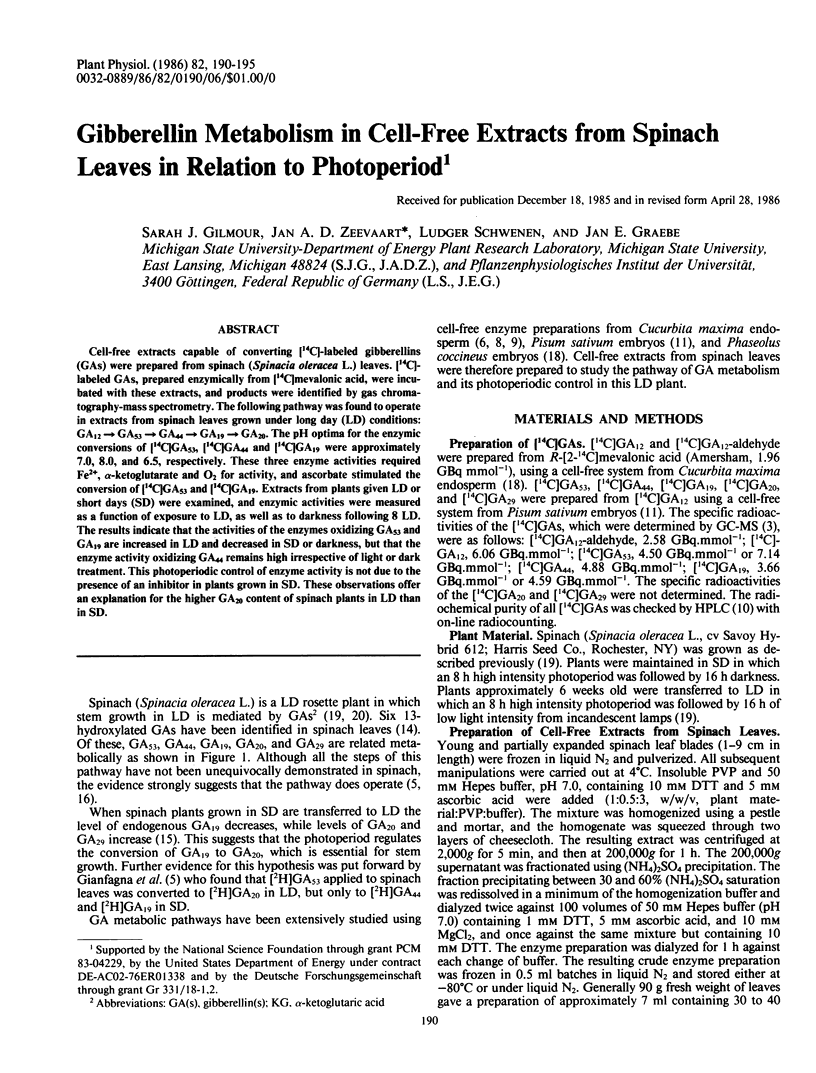
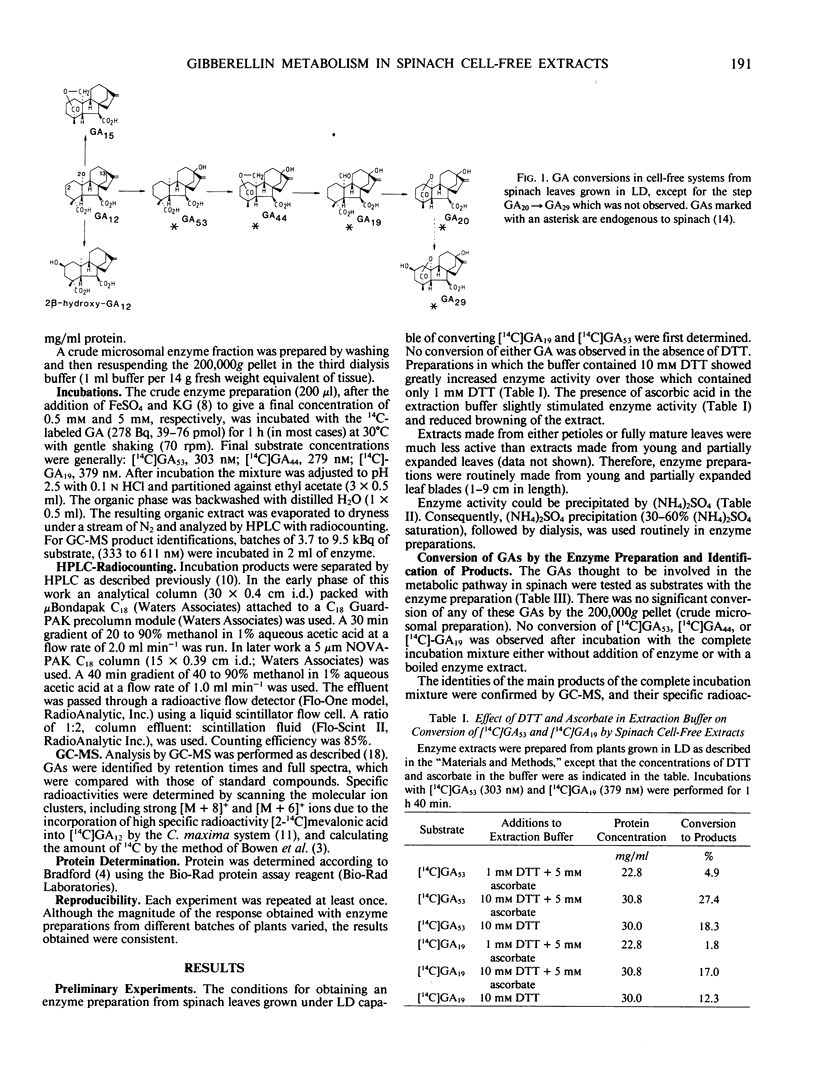
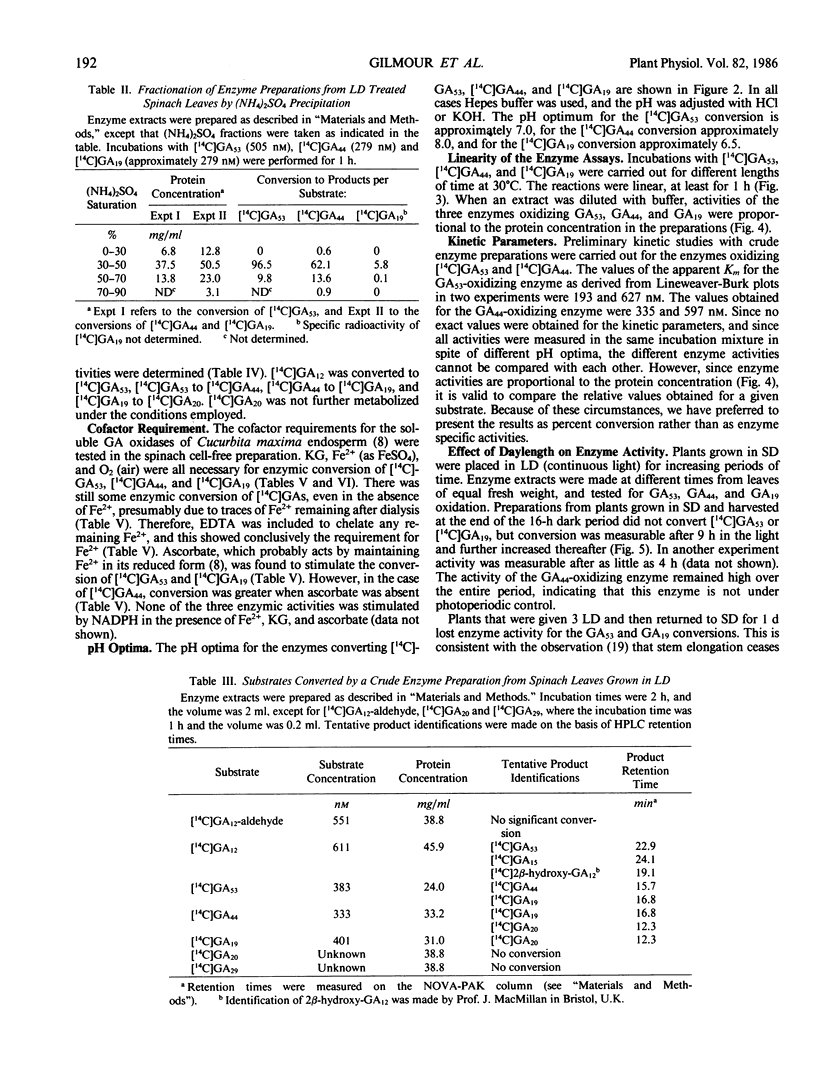
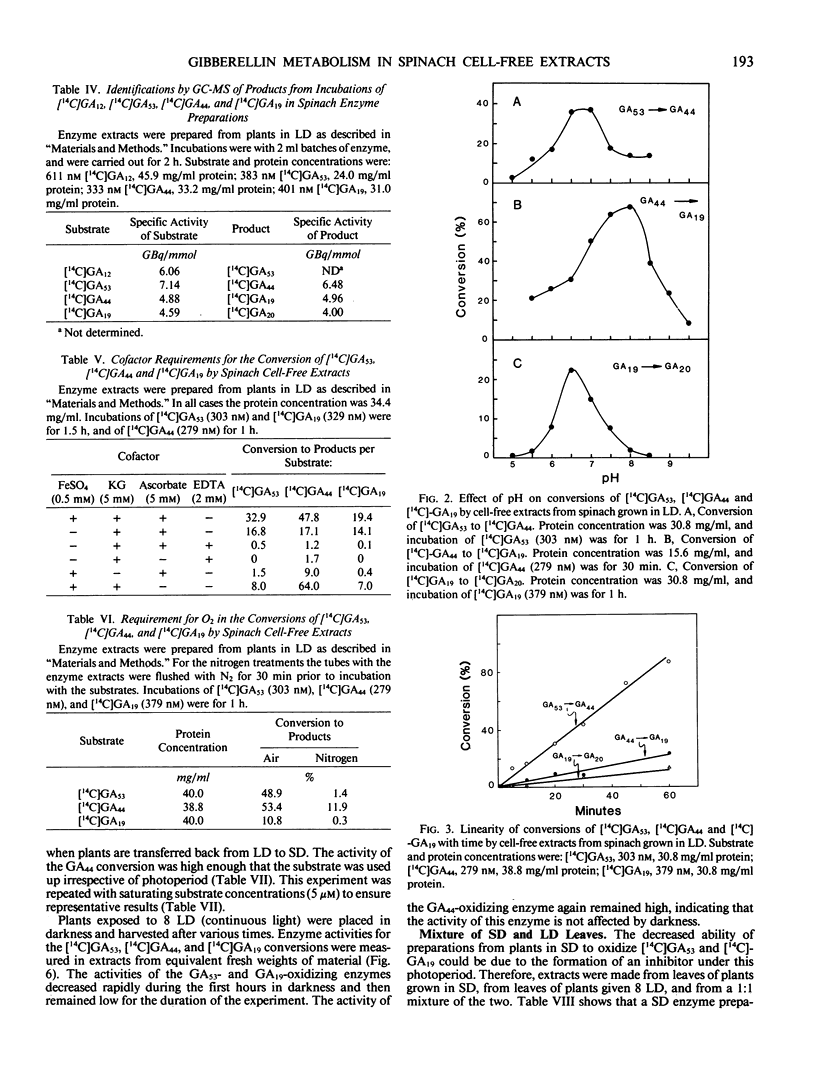
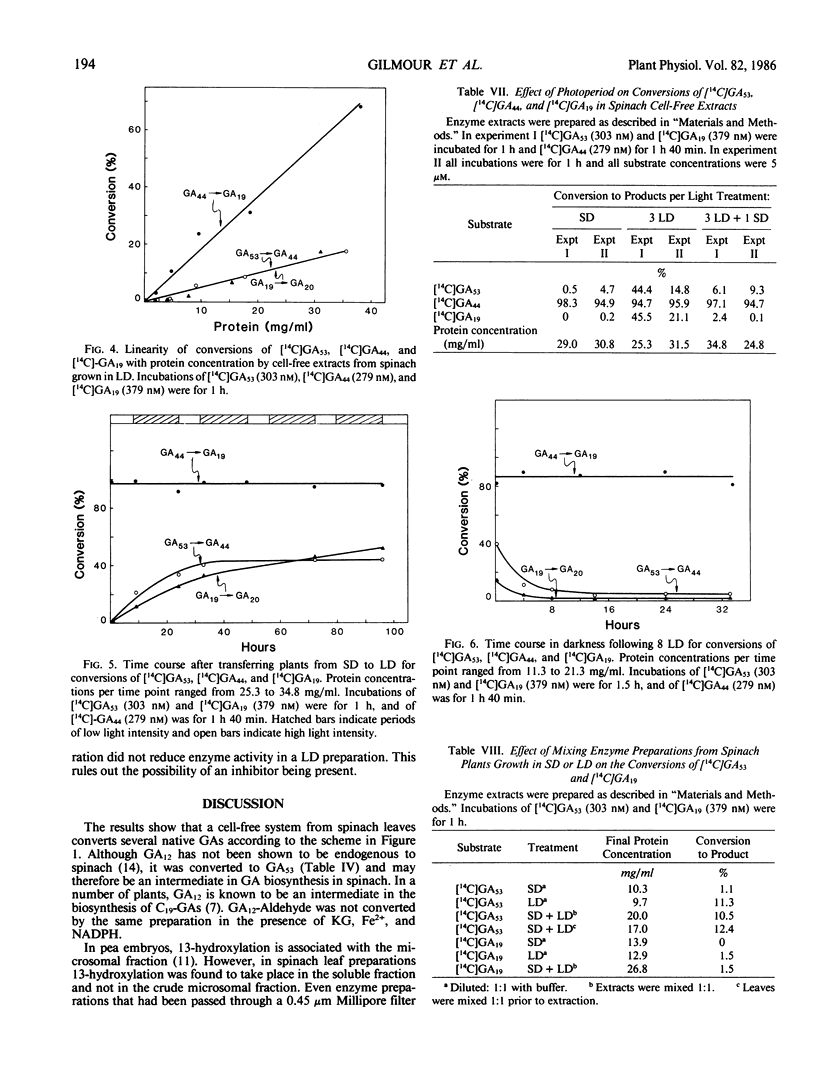
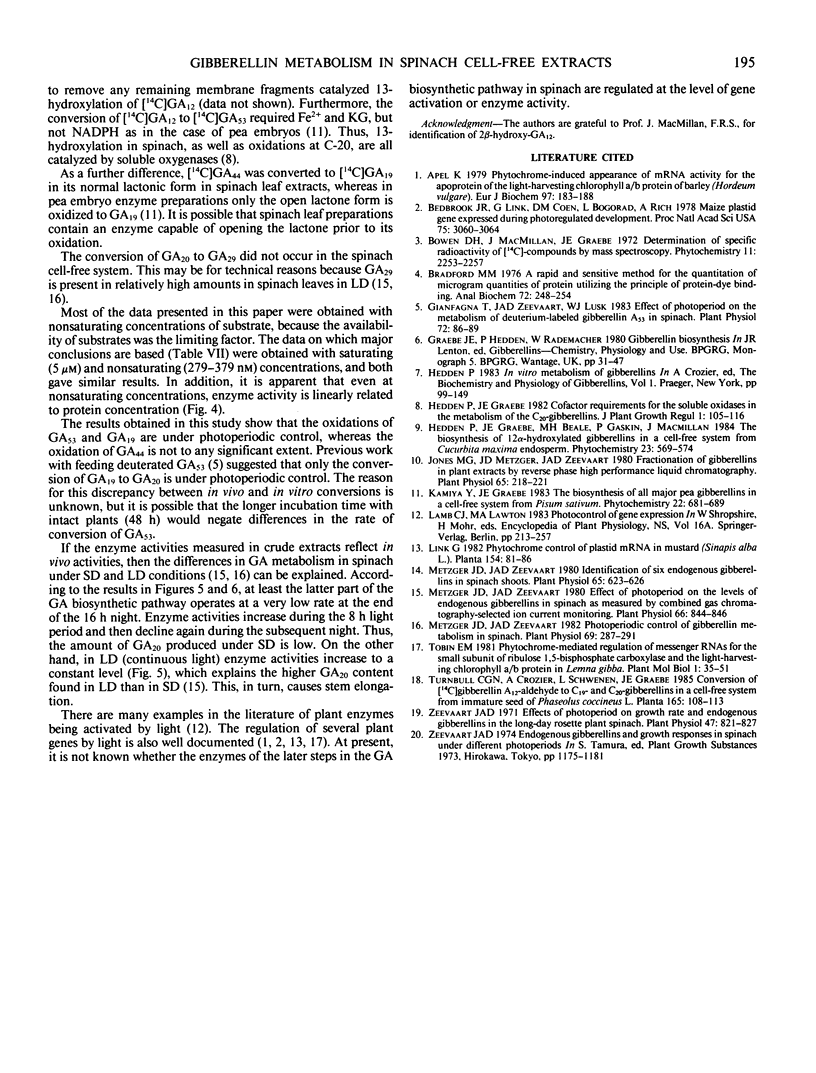
Selected References
These references are in PubMed. This may not be the complete list of references from this article.
- Apel K. Phytochrome-induced appearance of mRNA activity for the apoprotein of the light-harvesting chlorophyll a/b protein of barley (Hordeum vulgare). Eur J Biochem. 1979 Jun;97(1):183–188. doi: 10.1111/j.1432-1033.1979.tb13101.x. [DOI] [PubMed] [Google Scholar]
- Bedbrook J. R., Link G., Coen D. M., Bogorad L. Maize plastid gene expressed during photoregulated development. Proc Natl Acad Sci U S A. 1978 Jul;75(7):3060–3064. doi: 10.1073/pnas.75.7.3060. [DOI] [PMC free article] [PubMed] [Google Scholar]
- Bradford M. M. A rapid and sensitive method for the quantitation of microgram quantities of protein utilizing the principle of protein-dye binding. Anal Biochem. 1976 May 7;72:248–254. doi: 10.1006/abio.1976.9999. [DOI] [PubMed] [Google Scholar]
- Gianfagna T., Zeevaart J. A., Lusk W. J. Effect of photoperiod on the metabolism of deuterium-labeled gibberellin a(53) in spinach. Plant Physiol. 1983 May;72(1):86–89. doi: 10.1104/pp.72.1.86. [DOI] [PMC free article] [PubMed] [Google Scholar]
- Jones M. G., Metzger J. D., Zeevaart J. A. Fractionation of gibberellins in plant extracts by reverse phase high performance liquid chromatography. Plant Physiol. 1980 Feb;65(2):218–221. doi: 10.1104/pp.65.2.218. [DOI] [PMC free article] [PubMed] [Google Scholar]
- Metzger J. D., Zeevaart J. A. Effect of Photoperiod on the Levels of Endogenous Gibberellins in Spinach as Measured by Combined Gas Chromatography-selected Ion Current Monitoring. Plant Physiol. 1980 Nov;66(5):844–846. doi: 10.1104/pp.66.5.844. [DOI] [PMC free article] [PubMed] [Google Scholar]
- Metzger J. D., Zeevaart J. A. Identification of six endogenous gibberellins in spinach shoots. Plant Physiol. 1980 Apr;65(4):623–626. doi: 10.1104/pp.65.4.623. [DOI] [PMC free article] [PubMed] [Google Scholar]
- Metzger J. D., Zeevaart J. A. Photoperiodic control of gibberellin metabolism in spinach. Plant Physiol. 1982 Feb;69(2):287–291. doi: 10.1104/pp.69.2.287. [DOI] [PMC free article] [PubMed] [Google Scholar]
- Zeevaart J. A. Effects of photoperiod on growth rate and endogenous gibberellins in the long-day rosette plant spinach. Plant Physiol. 1971 Jun;47(6):821–827. doi: 10.1104/pp.47.6.821. [DOI] [PMC free article] [PubMed] [Google Scholar]


